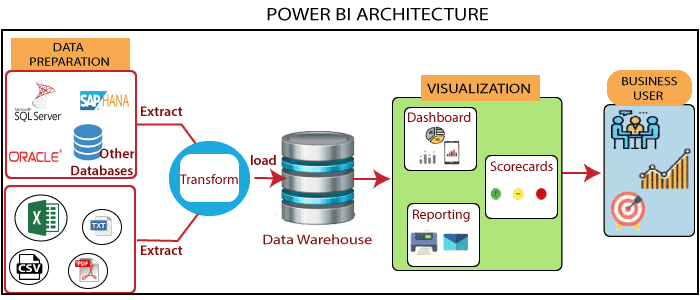Power BI Architecture
The architecture of Power BI is shown as below:

Power BI architecture has three phases. The first two phases use ETL (extract, transform, and load) process to handle the data.
- Data Integration: An organization needs to deal with the data that comes from different sources.
First, extract the data from different sources which can be your separate database, servers, etc.
Then the data is integrated into a standard format and stored at a common area that’s called staging area. - Data Processing: Still, the integrated data is not ready for visualization because the data needs processing before it can be presented. This data is pre-processed.
For example, the missing values or redundant values will be removed from the data sets.
After that, the business rules will be applied to the data, and it transforms into presentable data.
Then this data will be loaded into the data warehouse. - Data presentation: Once the data is loaded and processed, then it can be visualized much better with the use of various visualization that Power BI offers.
By using of dashboard and reports, we represent the data more intuitively.
These visual reports help business end-users to take business decision based on the insights.
To get more tutorial videos go through OnlineITguru’s Power BI Online Course Blog
